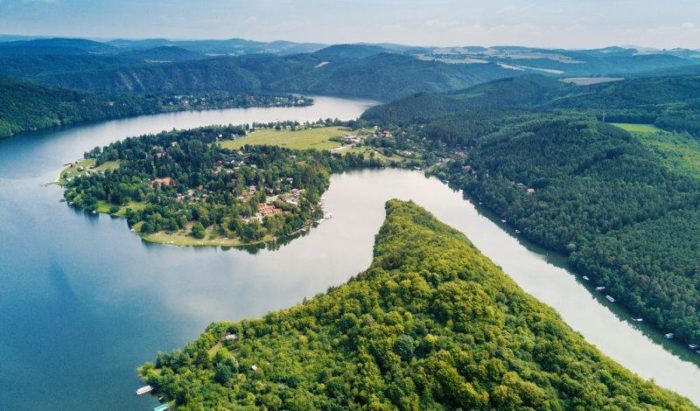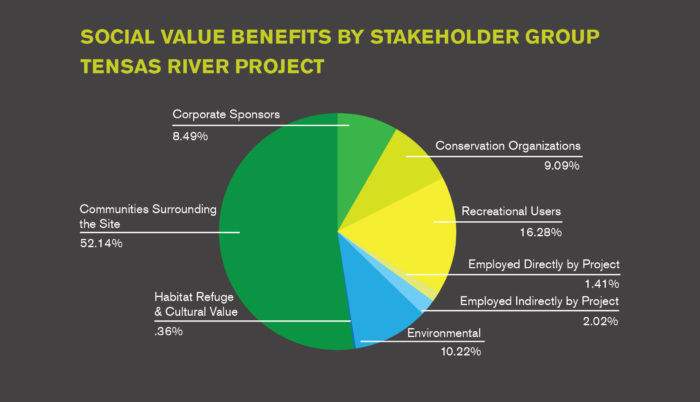
The following content is an interview conducted by Bailey Jacobs from the US Chamber of Commerce Foundation. It was originally published on USCCF’s website on 10/3/2017.
I recently interviewed PJ Marshall, co-founder and executive director of Restore the Earth Foundation, to discuss the importance of new models for measurement to quantify sustainability to help businesses better integrate people and the environment into core business decisions. Restore the Earth Foundation, has created a business model that offers partners a solid business case for achieving their sustainability goals through landscape scale restoration and the ability to track and monetize the cleaner air, cleaner water and environmental resiliency created as a result. PJ shares how Restore the Earth is working with its corporate partners to launch the nation’s largest landscape scale restoration project and how the nonprofit’s EcoMetrics Model is helping companies build the case for their investments in the North America’s Amazon project.
1. What is the North America’s Amazon project and what is its significance related to collaborative climate action in the US?
Restore the Earth Foundation is restoring 1 million acres in the Mississippi River Basin, referred to as North America’s Amazon.
The third largest watershed on Earth, the Mississippi River Basin is the most ecologically degraded region in North America and has the largest concentration of underserved communities in the U.S. Restoring 1 million acres of forest in North America’s Amazon will offset the climate footprint of the entire United States by 2%; start to reverse the impacts to the dead zone in the Gulf of Mexico by 12%; reduce business risk; make communities more resilient to storms and flooding; and generate $12 billion in economic value.
2. How can businesses support Restore the Earth’s mission?
Our partners are more than funders; they are visionary leaders pioneering a new approach to investing in natural capital. They join a robust network of collaborative stakeholders including government agencies, NGOs, universities, businesses, civic groups and individuals.
Financing a project is not the only way a company can support our mission. We also seek volunteers. Our corporate partners provide the critical boots on-the-ground ‒ employee volunteers who get in the mud and help us clear waterways and plant native seedlings and vegetation. Further, our corporate partners serve as vocal advocates of landscape scale restoration as a holistic climate change solution; a solution that not only benefits the environment, but also supports the health and well-being of communities and our nation’s economic development.
3. What are the direct and indirect benefits to corporate partners?
Working with public partners, Restore the Earth has developed a private/public funding mechanism, where $1 of private investment unlocks public funding for a total of $3, to amplify corporate investments and realize greater impacts. Additionally, corporate partners have the ability to cost-effectively reduce their climate footprint, gain charitable tax benefits, and secure compelling information to communicate the partnership’s environmental, social and economic value.
In addition to direct benefits, a partner also gains significant indirect benefits from the deployment of restoration as functional green infrastructure. These benefits include: enhanced risk management and operational efficiency, disruption avoidance, local job creation, improved reputation and increased social license to operate.
4. What is the EcoMetrics Model and what prompted Restore the Earth to design this comprehensive valuation analysis?
Restore the Earth’s EcoMetrics Model provides a unique perspective on the investment in restoration projects. This analysis gives funders the ability to understand and communicate its returns through the use of quantifiable indicators, verified metrics and monetized value. This information can be used for internal and external corporate reporting.
The EcoMetrics Model is built around and aligned with the guiding principles of Social Value International’s SROI methodology and International Integrated Reporting Council’s Reporting Framework. The model monitors, tracks and collects data on a specific restoration project, accounting for the environmental, social and economic value created for community and funding stakeholders. Tangible and intangible values are fully documented and third-party verified in a report ready for audit, providing full transparency for corporate reporting.
Restore the Earth developed the EcoMetrics Model to fully support the business case for major investment in landscape-scale environmental restoration to elevate investments in forest restoration from a philanthropic donation to a significant corporate investment impacting business and society.
5. How are your corporate partners using these environmental, social and economic metrics?
Restore the Earth’s corporate funding partners are using these metrics to document and communicate how investment in landscape-scale restoration is helping meet corporate goals. These corporate goals may include: operational efficiency, assuring sustainable resources and supply chains, mitigating climate footprint, meeting Sustainable Development Goal commitments, supporting community sustainability and resiliency, driving employee recruitment and retention, protecting and enhancing corporate reputation.
6. Can you share an example of the integrated return on investment realized by one of your corporate partners?
Entergy invested $1,546,000 in a landscape scale reforestation project in the Tensas River National Wildlife Refuge, part of North America’s Amazon. As a result of this capital investment, the community and funding stakeholders will see a social and market value creation of $119,611,947 in financial, manufactured, human, social and natural capital over 40 years.
For every $1 Entergy invested, $36.20 of integrated environmental, social and economic value is created and is accounted for in their integrated annual report
The breakdown of this value created reflects $32.99 in social return on investment (SROI) based on the social value returned to community stakeholders. These community stakeholder benefits include cleaner air and water, job creation, enhanced recreational opportunities, soil stabilization, storm protection and flood control, and contributions to local culture.
The remaining value relates to the direct market value created by the carbon, nitrogen and phosphorus offsets and social license to operate amounting to $3.21 for every $1 invested by Entergy.

7. What’s next? How will the EcoMetrics Model help Restore the Earth meet its mission of restoring one million acres in North America’s Amazon?
As a result of the value and impact of the monetized metrics provided by the EcoMetrics Model, Restore the Earth is adapting it into a digital platform for assessing natural capital and green infrastructure beyond landscape restoration to projects of various kinds. To develop this platform, Restore the Earth is partnering with an internationally recognized team of professionals in the fields of remote imaging, big data modeling and integrated reporting.
The ability of the EcoMetrics Model to account for, in monetized terms, impacts, benefits, ROI and SROI returns, provides the business case and incentive for businesses, philanthropists, impact investors, individuals and the public sector to engage with Restore the Earth to restore and reclaim North America’s Amazon.